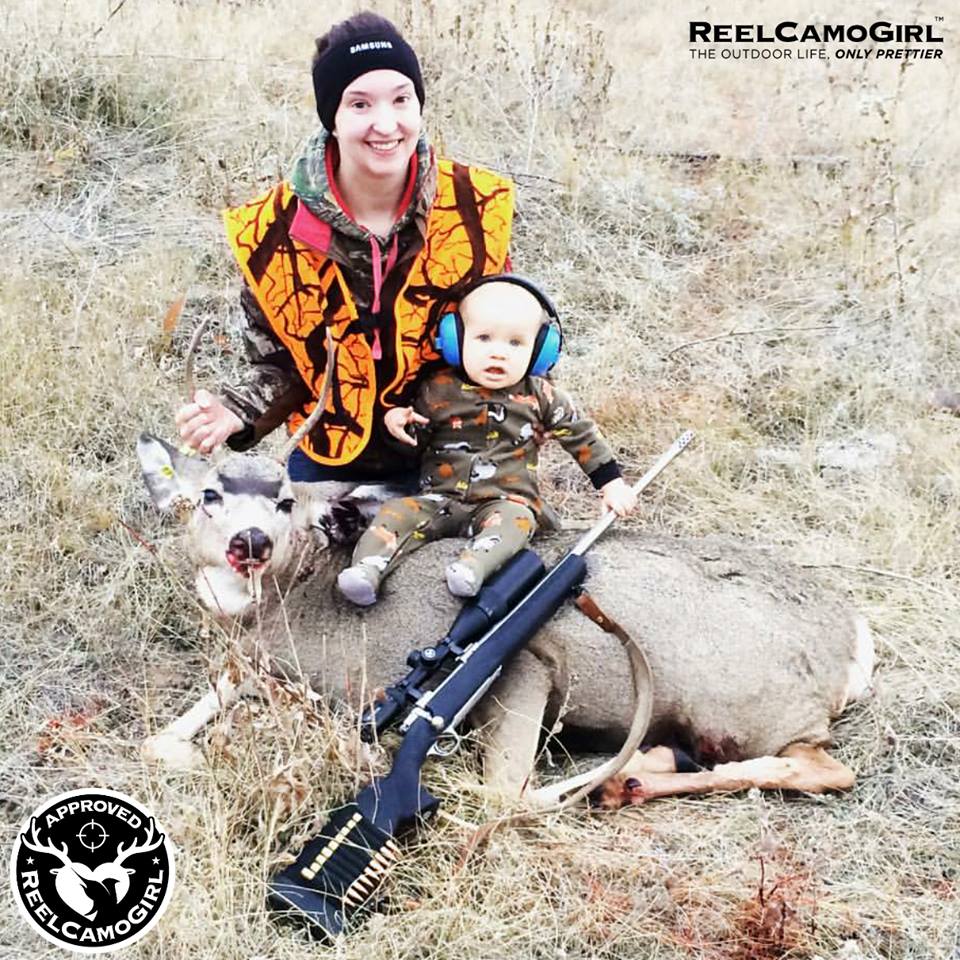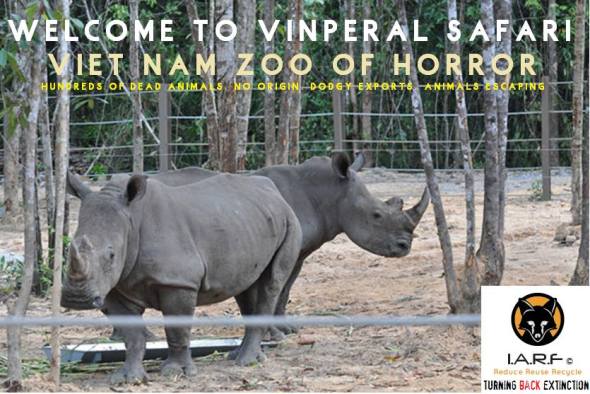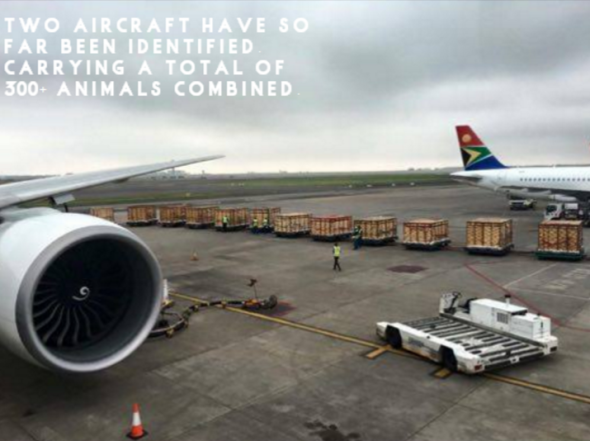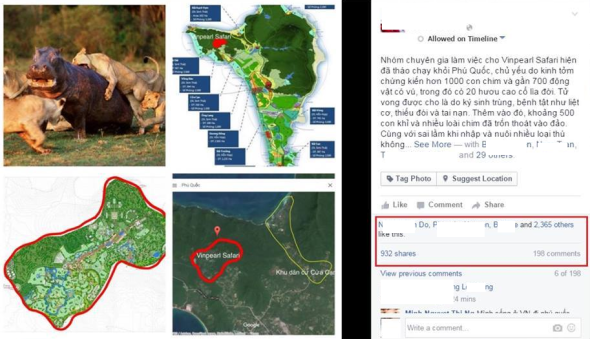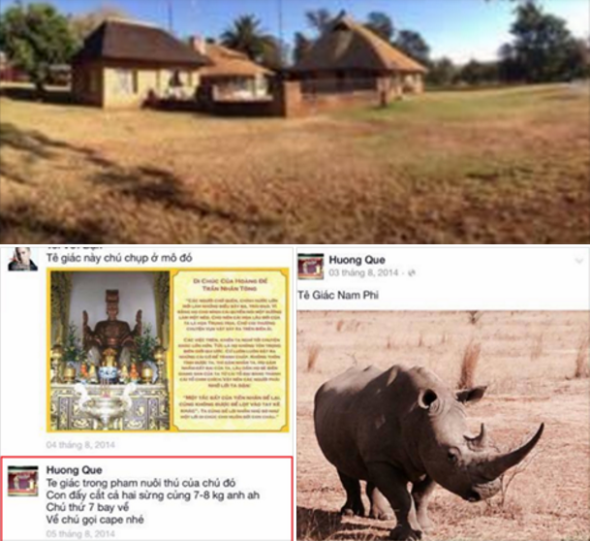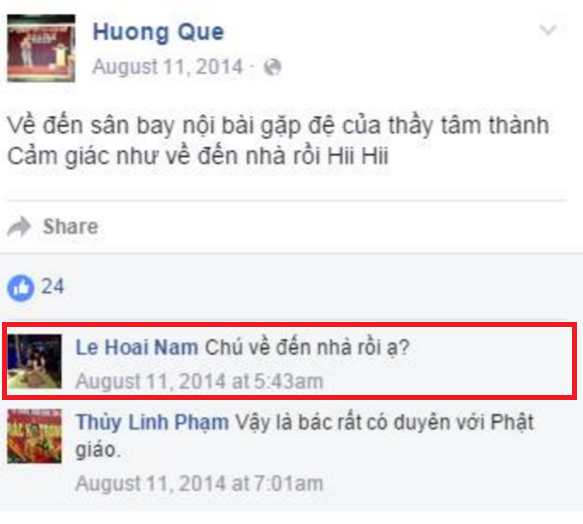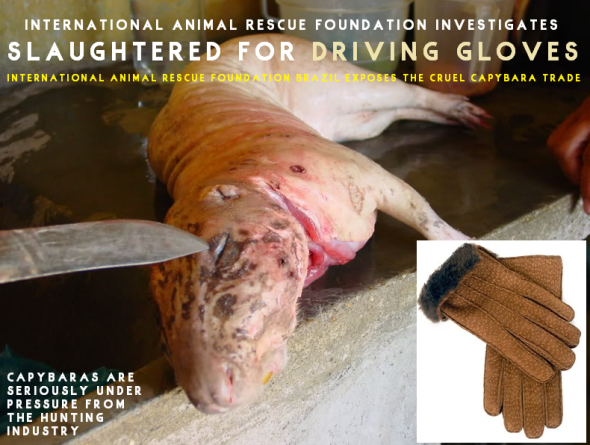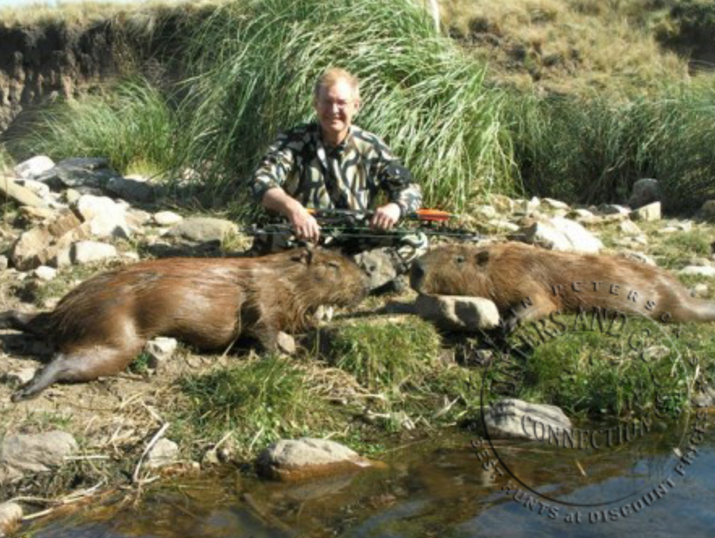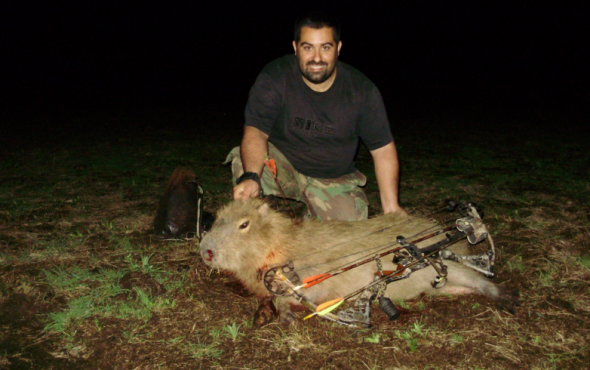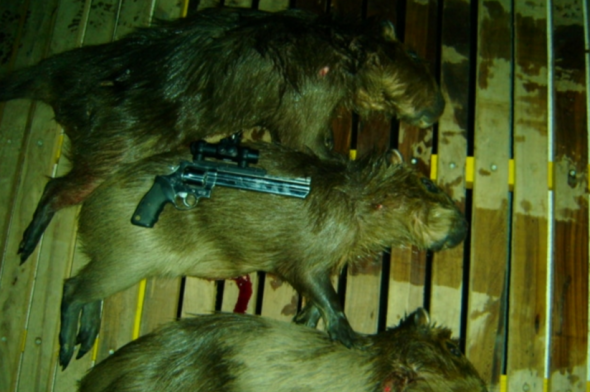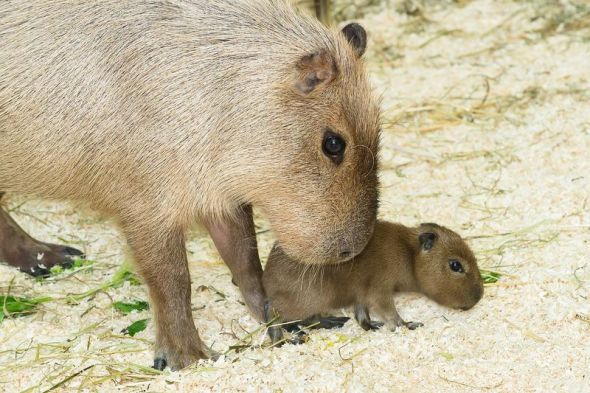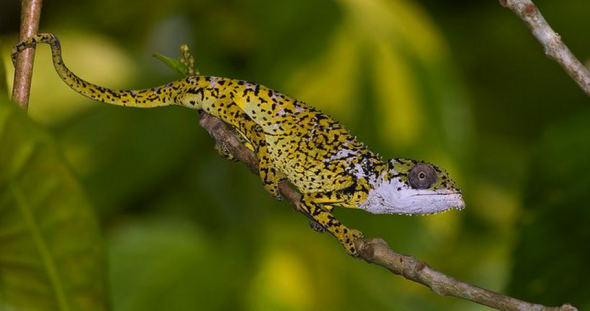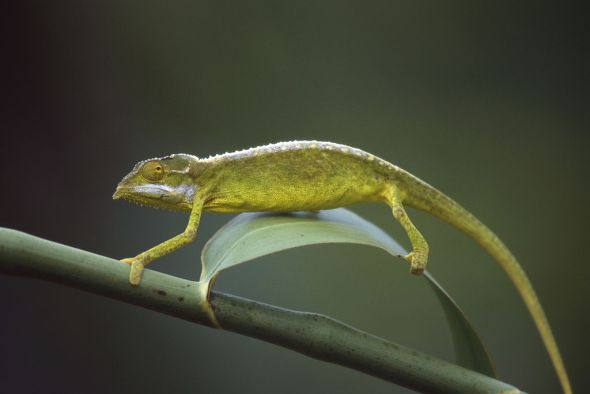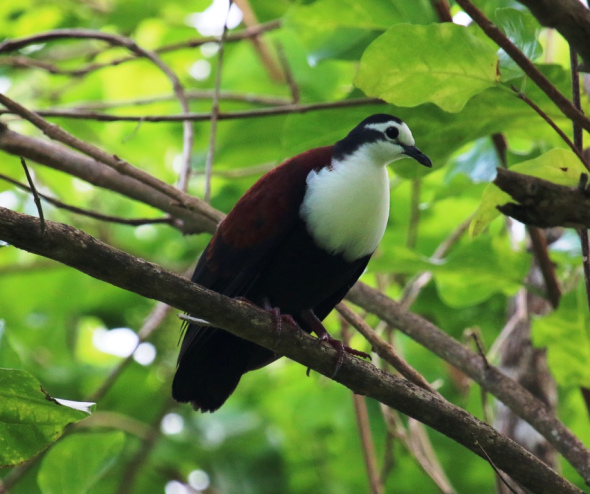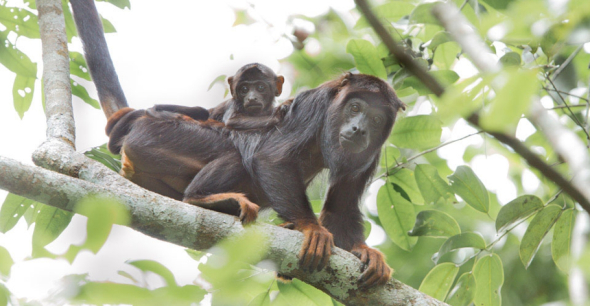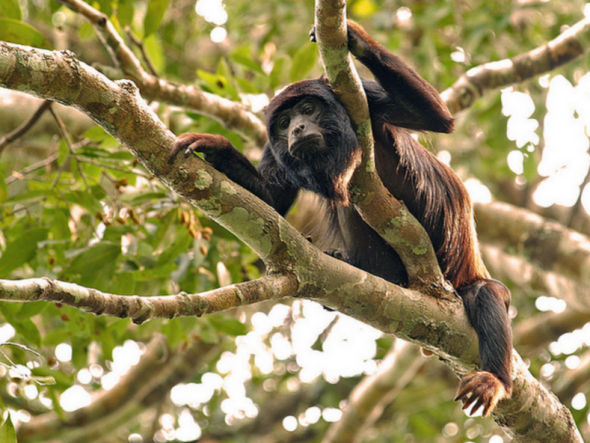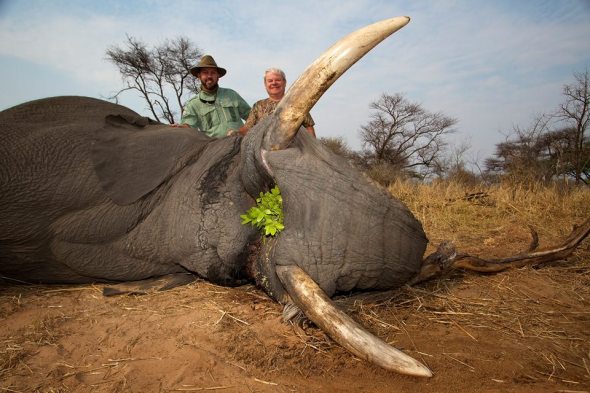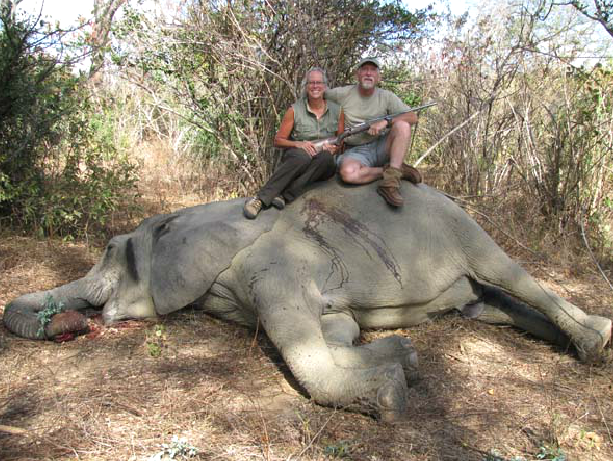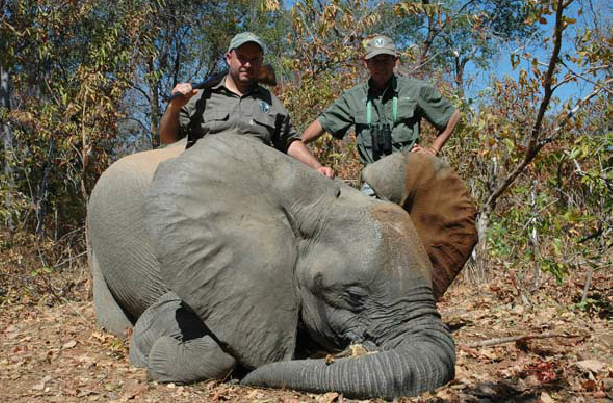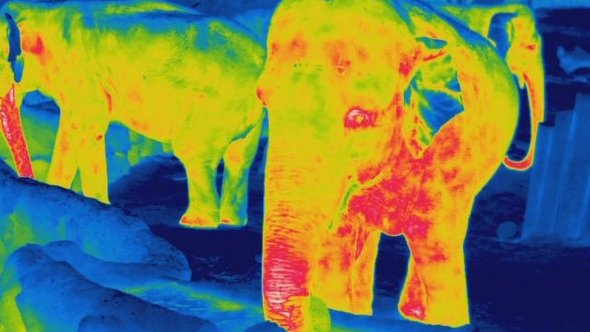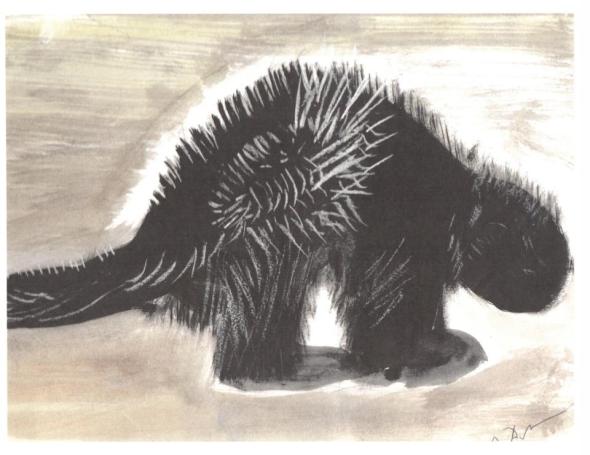Parenting & Hunting | Exposing Children to Violence II
TEACH THEM YOUNG | POOR PARENTING
I have tried in vain to not post images about trophy hunting or any hunting, simply because it provokes so much rage, anger, and hatred. However I have yet again violated my own self discipline, because I am angered to the core of witnessing selfish and arrogant parents displaying poor parenting, not forgetting the obvious, teaching their young children during the developmental brain stage, that killing animals is pretty much okay, because mummy and daddy does it.
Violence is violence, and abuse is abuse at the end of the day, killing an animal and allowing your child to watch such horror and gore, or act out is no different to that of placing your child in-front of a (16, 17 18 or 21) age restricted movie, adult film or violent video game. While films and video games are though mostly faked, hunting isn’t. Furthermore while the human brain develops from the ages of 1-21, any such displays of violence, abuse, neglect or harm can heavily imprint onto the child within this developing process. Which in turn can change a child’s thought process and in many cases - corrupt a child’s brain, for how long though depends on the severity of violence exposed.
Violence is ubiquitous and often glorified, and within today’s hunting theater violence is glorified as an acceptable behavior. Hunters may and do argue this, however they must remember that at the end of the day, violence is violence. Whether its killing an animal with a shot gun, cross bow, or breaking a rabbits neck, these acts are still ‘violent’, and they are “acted out”. Then of course comes the ‘glorification’, whereas back in the early 1950’s and 1970’s such acts like the one pictured above wouldn’t be glorified.
Watching a suspense movie, playing a violent video game can often be seen as a form of relaxation, exactly like recreational hunting. Surely there is nothing wrong with this? Evidence is continuing to mount, that these so called “relaxing thriller and suspense movies, action packed and violent video games, down to hunting be it for food or sport” is indeed having a profound and ‘non-relaxing effect’ onto the human brain.
Like I have explained, when such suspense, violence or action packed sport are relayed and projected onto minors within the “brain developmental stage”, such behavior or actions can have a disastrous effect onto the human brain and our way of thinking. Dress it up as much as you want, call it what you like, abuse is abuse, violence is violence. They are both linked.
A study by the Indiana University School of Medicine examined young men and violent media exposure. There were visible alterations in MRI brain scans after only one week of playing a violent video game. In particular, there was a significant decrease in the activation of prefrontal portions of the brain and a greater activation of the amygdala. Now some hunters may disagree here, however lets go over this one sentence again. “Examined young men and violent media exposure”. Violent video exposure or any exposure from anything that is deemed as violent can in both men and women have a profound effect onto the main thought and thinking process. This has also been linked to depression, especially those in countries with little sunlight and poor weather.
From what I am aware, the study conducted by the Indiana University School of Medicine is one of the first such studies of its kind. So its going to be pretty interesting to examine the results when further studies are rolled out worldwide, and if these conclusive reports will eventually prompt governments, media producers, and hunting outfitters to eventually impose restrictions relating to exposing children and minors to violence. The video game above is a prime example of “acting out violence”.
The young viewer states they love animals and would never harm them, yet uses language such as “come here you little bitch, we fucked up, we’ll get our revenge, come on get that mother fucker”. Again some hunters may disagree here, and believe this is nothing more than silly childish banter. The fact is, the video gamer agrees that she loves animals, yet is prepared to kill them within a simulated game. Brain study evidence also proves that prolonged exposure to such violent video games can increase depression, self harm, lower ones thinking process, concentration and see the individual committing a violent act after prolonged gaming. There is also evidence that points to video gamer’s wanting to “do the real thing”. I.e Go out and purchase a gun, and enact the same behavior from that game within real life.
But the findings are intriguing and beg the question: Does an activation of the limbic system and an inhibition of the prefrontal cortex predispose to violent behavior? This is a relatively easy proposition to test and I suspect we will see more studies soon. Meanwhile the University of Alabama conducted an identical study, and that study also showed up exactly the same results from the study conducted in Indiana.
Results from the main Alabama and Indiana study showed violent and aggressive traits didn’t occur soon after watching “violent and aggressive video games”. However violent and aggressive traits did occur some months, to a year after being playing such action packed games. I myself have always tried to explain this concern to hunters when they debate and argue with me. They believe that one violent act doesn’t lead directly to another, and that’s true, which both the studies pointed out.
However, unfortunately, its the “prolonged over and over again exposure to such aggression and violence that eventually does increase violent and abusive tendencies to unfold”. The neurological examination team concluded “The study concludes with a caution for parents that immature and/or aggressive children should not have access to violent films”. Again some hunting families may argue here, and debate profusely that hunting is not under any circumstances identical to that of playing a violent video again.
To a degree the average family hunter are correct, its not identical, however there are many identical features within such games that are played out in hunting I.e: Killing, Abuse, Death, Violence, Murder, Bad Language, Glory and Torture. So theoretically speaking, hunting and exposing ones child to such hunting practices, or allowing a child to hunt, (is a form of violence), and can eventually “over time”, see aggressive and abusive traits played out, all of which is no different to playing an action packed violent video game, or watching continuously many violent, abusive and suspense movies.
The Macquarie University Children and Families Research Center found that children who watch violent movies are more likely to view the world as an unsympathetic, malicious and scary place and that this stimulates aggression. It also suggests children are more likely to exhibit combative behavior while becoming desensitized to violence. Reportedly, the MRI brain scans of children who have viewed film or television violence had a similar look when compared to those who have violently acted out. So we know that children who “act out” within video games in the same manner as “hunting” are more than likely to “act out violence”, than those who simply watch an action packed aggression filled movie.
It is without a doubt that all studies that are being conducted and have been concluded thus far by neurologists, and psychiatrists have shown “children who act out within violent games” all show at a later date brain changes, aggressive behavior, and poor decision making”. Unfortunately there will be deniers in relation to this article, reports and follow-ups. Just like there were deniers that stated five decades ago, smoking doesn’t cause cancer, drinking doesn’t cause liver disease Etc.
Regardless of whether its a video game, watching television or participating down to exposing hunting behavior to minors. When violence is portrayed, over a prolonged period of time. At some point there will be children who’s brains cannot handle the mass degree of violence, that then, unfortunately go out and commit a violent act. The Virginia Tech Research Division stated; “Studies showed students several non-violent movies, followed by super-violent movies. Results indicated violent films can increase hostile behavior”.
Article 1: http://www.research.vt.edu/resmag/sciencecol/media_violence.html
Article 2: http://www.ncbi.nlm.nih.gov/pmc/articles/PMC4227415/
Article 3: http://www.researchonline.mq.edu.au/vital/access/manager/Repository/mq:21163?f0=type%3A%22book+chapter%22
Article 4: http://www.dailymail.co.uk/news/article-2516427/Sandy-Hook-shooter-Adam-Lanza-83k-online-kills-massacre.html
Taking ones child out and “playing or acting out” a violent sport, shooting, cross bow, or just snaring, is no different to sitting your child down in front of a video game that is violent, thus allowing ones child to “act out a violent act”. Shooting an animal is no different to shooting a human. The sooner hunters and governments around the globe understand this, the better. Then we may eventually see a decrease in violent youth behavior.
Dr Jose C. Depre - PhD. MEnvSc. BSc(Hons) Botany, PhD(NeuroSci) D.V.M. Environmental & Human Science
Environmental and Botanical Scientist.
VINPEARL SAFARI CONTROVERSY | UNFOLDING EVENTS.
VINPEARL SAFARI | CONTROVERSY
FOR THE PEOPLE OF VIET NAM | FOR THE ANIMALS OF VINPEARL
Controversy has been brewing wildly around Viet Nam’s first ever safari, where a total of either “108 or 115 animals died over the course of 1-2 months on the premises”, with a further “135 monkeys escaping from the premises”. Biologists, Environmentalists, and Journalists have all tried in vain to obtain answers from Vinpearl, and Cites Viet Nam, unfortunately neither expert has actually received, or been sent paperwork that can place speculation, and allegations at rest. Down to investigating further as to why so many animals died on the premises.
International Animal Rescue Foundation Africa was first informed about Vinpearl back in early February of this year (2016). From the start of February 2016, we were emailed, phoned and sent various social media requests from many Vietnamese and foreign citizens asking us to investigate the Safari, and to look into other concerning allegations. International Animal Rescue Foundation Africa then contacted our Asian counterparts, and began painstakingly laying out all data for us to scrutinize. The following data that can be proven to some degree as (factual), is listed below for your immediate attention, and information.
- Vinpearl imported ‘we believe some 330 animals’ from South Africa, these animals ranged from giraffe, tigers, lions, monkeys, kudu, crocodiles, impala, and wildebeest Etc. The farm located in Capetown that supplied Vinpearl belongs to Mr Huong Que, who admitted back in 2014 to illegally de-horning and trafficking two rhino horns from South Africa into Viet Nam. Mr Huong Que, strangely, hasn’t been arrested for this offence. Furthermore a Viet Nam Cites officer identified as Mr Le Hoai Nam has been friends with Mr Huong Que on Facebook since (2014) when Mr Huong Que admitted to breaking South African and international law (2014). Based on Mr Le Hoai Nam and Mr Huong Que’s online communications, they seem to know each other very well.
- From the 12th February ‘it was alleged’ many ex-pats began leaving the island of Bai Dai, Ganh Dau Phu Quoc, Kiến Giang, Vietnam in disgust due to many animals dying, and escaping at the safari. Vinpearl Safari and the media stayed completely silent. Citizens of Viet Nam and abroad quoted as many as “4000” animals dying. However since media and press have documented on the case, Vinpearl have been forced to break their silence. Vinpearl then admitted (without showing evidence in the way of paperwork), that some “105 to 108 animals did die”, with a further “135 monkeys escaping”.
- Speculation then emerged that Mr Chu Dang Khoa, his ex-wife or (ex-girlfriend), and father Mr Huong Que were involved in the shipping of animals from South Africa, Eastern Europe and Asia into Vinpearl Safari. So far, to date we can prove that Mr Huong Que, and Mr Chu Dang Khoa’s ex-partner, were most certainly involved in the shipping of many animals from South Africa. We also know that Mr Chu Dang Khoa did once live on his fathers farm in South Africa, Capetown. However as explained Mr Chu Dang Khoa still doesn’t as such fit into the main picture. We do though find it somewhat coincidental that Mr Chu Dang Khoa’s ex-partner, and his father are involved in shipping animals into Vinpearl, many of which ‘we suspect’ have unfortunately died (that originated from the African continent).
- On the 24th February 2016, Vinpearl then stated the following within a press and media article, again showing no paperwork, or evidence to back this claim up: Total animals imported with permits is 2,236 individuals. As of Feb. 19, 2016 there are 2.2004 individuals living at the zoo, 12 individuals were born at the zoo upon their arrival. Then a total of 108 individuals died.
Image: Two aircraft are identified as shipping animals from South Africa.
Points 1-4 are areas within our own environmental investigation that contain missing pieces of the jigsaw so to say. Furthermore where there is evidence of admitting criminal activity directly under the noses of a Vietnamese Cites officer I.e Mr Le Hoai Nam, then we have cause of concern.
Below are questions that we require answering, of which we have already politely asked, however been refused answers, down to our own internet protocol address banned from emailing Vinpearl. The following questions are aimed at both Cites Viet Nam, and Vinpearl.
- CITES VIET NAM: We request that all permits relating to all 2,236 animals that were ‘allegedly imported’ to be made public, communicated to us via email, or letter (which will pay the charge), or made view-able to trusted press journalists and NGO’s?
- CITES VIET NAM: We request the full veterinary reports relating to each of the alleged “108 animals that died”, the cause of death, health reports, and data that can be examined in relation to all of the alleged 108 animals health ‘prior and before entering Vinpearl Safari”?
- CITES VIET NAM: What relation does the Vietnam Cites Officer identified as Mr Le Hoai Nam have in connection with Mr Huong Que? Is this relation professional, or are the two merely friends? Furthermore when Mr Huong Que admitted to illegally de-horning and trafficking two rhino horns (front and rear), back in 2014, why didn’t the Vietnamese Cites Officer who has been friends with Mr Huong Que since 2014 pick this up, and act upon it?
- CITES VIET NAM: Where did the alleged “14 rhino come from” that has been stated in press and media as being “exchanged” from another safari of which we have since located is nothing but a construction site, with major land clearance problems? Out of the 108 animals that died, were there any rhino deaths, and if so where are these rhino carcasses now, and the horns?
- VINPEARL: We request paperwork from My Quynh Safari/Vinpearl Safari that can categorically back the claims up from Vinpearl and Cites Viet Nam relating to the 14 rhino on Vinpearls Safari. If Vinpearl did take 14 rhino from My Quynh Safari, then that paperwork will be held by Vinpearl, My Quynh Safari and Cites Viet Nam. If no paperwork is shown then we can only but continue questioning?
- VINPEARL: We request paperwork that shows all animals imported from overseas went through the correct quarantine protocols, were inspected for disease, stress, and underlying medical conditions. Furthermore we also request the name[s] of who signed the animals off that have been reported as dead as “fit to be released into a newly built safari”?
Image: Someone begins demanding posts are removed about Vinpearls alleged corruption.
A recent press article released today stated that the Cites Vietnamese Management Authority inspected Vinpearl Safari grounds, and found that no illegal activities had occurred. The following points we’ve located regarding Vinpearl Safari and the only African supplier are listed below for ones immediate attention.
- While we can take on board that some animals may suffer ill health, a newly established safari, that is professionally run, hosts expert zoologists and is owned to a multi billionaire just doesn’t see 108 animals die.
- A professionally run safari and the breeders themselves simply don’t allow some 12 pregnant animals to be transported over 10,300 kms, for some 11.5 hours. Some of the animals that have since given birth originated from South Africa, and that flight would have caused unnecessary suffering. Furthermore the medications administered could have harmed the unborn young. So its safe to say that professional and adequate veterinary checks, and surveillance were not carried out accordingly.
- How was it even possible for some 135 macaques to escape from an allegedly ‘well secured safari’? The safari states the 135 macaques were placed into larger cages for bigger primates. This now raises the concern about the so called locally transported rhino, that are penned in with what appears to be strong chicken wire.
- We don’t buy the answer that claims 108 animals simply died due to the transportation and not being able to adjust to the environment in full. These animals wouldn’t have died had the relevant veterinary checks been conducted as explained prior to shipping, and on landing.
- When Vinpearl hit the headlines throughout Viet Nam unidentified individuals were asked to remove press, media and Facebook posts. We have examined all of them posts of which not a single post actually proves animal cruelty, trafficking or wildlife trade. What the posts actually touched up on was; Inhumane transportation, animal deaths, speculation about the safari, who the suppliers were, and why some zoologists had indeed left the safari due to many animals dying, suffering disease and virus.
- Why was both Cites Viet Nam, Vinpearl, Cites South Africa and the DEA doing business with Mr Huong Que, and Mr Chu Dang Khoa? Mr Huong Que admitted to de-horning and trafficking rhino horns, and Mr Chu Dang Khoa is known to the Department of Environmental Affairs (South Africa), for dealing in rhino horns and diamonds. The DEA ‘nicknamed him as Mr Rhino Horn Billionaire’.
Image: Mr Huong Que who supplied Vinpearl admits to violating wildlife law.
While we understand that a Vietnamese Cites Management Officer has indeed paid a visit to Vinpearl claiming that everything is all above board, we ourselves want to see proof as explained above. We believe that while the main breeder that is Mr Huong, has relations to Cites Viet Nam (see image below), then corruption could be at play here relating back to the so called visit this week stating all was okay at the safari.
Image: Cites Vietnamese Officer asks Mr Que when he’ll be back home?
This article will be updated as and when. We please ask that visitors to the site stay tuned for regular updates that will be dated and timed. The whole purpose of this article is to get to the bottom of why so many animals have died, why government agencies are doing business with known criminals, corruption, dishonesty, trafficking, wildlife trade, and more. We are not going to print data that cannot be proved. Finally this article cannot be censored by the Vietnamese Government.
The people of Vietnam have a duty to know just exactly what is going on here. Its clear although not proven that people in high places are also involved here to some degree. Who are the other dealers too? Where in Europe and America did other animals come from, did Mr Rhino Horn Billionaire and ex-partner, father and others supply the entire safari, and if so what relation do they have with Viet Nams most richest man?
International Animal Rescue Foundation Africa has communicated our concerns to SAPs relating to wildlife trafficking regarding Mr Que’s de-horning of a rhino and illegally trafficking them horns back to Viet Nam. If anything this man needs to be questioned about his comment, the rhino carcass must be located (if there is one), and the farm that Mr Que owns must be investigated to satisfy our own concerns and wildlife agencies that further crimes haven’t been committed on this farm. The longer it goes ignored, the quicker evidence (if any), will be concealed. One doesn’t just admit to committing a serious wildlife crime as a joke.
Environmental Crimes Department.
Formal Public Apology addressed to: World Protection for Dogs and Cats in the Meat Trade Charity.
International Animal Rescue Foundation
Formal Public Apology addressed to: World Protection for Dogs and Cats in the Meat Trade Charity Registration No: 1154524.
Addressed to: (WPDCMT UK)
MR DAVID MERRILL
MME JULIA DE CADENET
MR Robert DONKER’S
http://www.notodogmeat.com/
Addressed to: (WPDCMT USA)
MME FIA PERERA
MME LORI ALLEN
http://www.notodogmeat.com/usateam.php
Dear Mme Julia de Cadenet (CEO).
March (2013) our organisations investigations department the [E.A.D] and (CEO) Dr Depre was alerted to ‘allegations of possible fraud, deception, and misconduct relating to the misuse of public donations’. Once alerted we then conducted a tedious, and at times, quite frustrating investigation, within the public domain, and behind the scenes. From (2013-2016) we (the organisation) was provided with countless reams of data, emails dating back from 2013-2014, and alleged misconduct, (relating to deception and fraud).
From 2013-2016 the organisation then set about to investigate these alleged claims. At no point from 2013-2016 did we or third parties locate a single scrap of evidence that backed these claims up. The reasons for our own independent investigation was due to the gargantuan public backlash of which was bringing other (unrelated organisations into disrepute directly and indirectly). The public backlash has derived from what we can only locate 6-9 individuals online that are related directly or indirectly. Most of the names involved have been withheld.
The following data listed below has proven to be false from 2013-2016, which we (the organisation) apologize profusely, because at times we were led to believe that fraud, and deception was ongoing, regarding the communications that were posted online. These communications in the way of (screenshots and copied and pasted emails), pushed us briefly out of conservationism investigations, and into civil actions, which we believed at the best of times, that these allegations were indeed factual. A meeting that was held in relation to the work that we conduct annually bought up the alleged allegations and how we could either prove them to be true or false via ‘professional investigatory work’. From this point, allegations; he said this; she said that; (Etc) were then pushed aside. A meeting was then arranged with the Charity Commission (2015 September), and the Institute of Fundraising, with a further meeting (2016 and communications via telephone)..
1… When founded the charity allegedly illegally harvested donations from street pots without a license. (This allegation has been proven to be false, and the council involved have confirmed that a licence was indeed sent to the fundraiser).
2. Refunds were not awarded to a handful of individuals that purchased clothing from the charity website. (Emails from 2013-2014 have proven this to be false, receipts and PayPal data has also proven these allegations to be false).
3. 2014-2015 charity 1154524 ‘allegedly stole donations via a Total Giving platform donation link’. The allegations stated that charity 1154524, hadn’t given all incoming donations on a restricted UK fundraiser to the Philippines ‘non-registered charity Dogs Mountain’. Total Giving was in fact to blame here, for not closing down the fundraiser which they have confirmed. The reason why charity 1154524 were not made aware of incoming money was because PayPal does not state where that income is coming from. PayPal only confirms that an ‘amount has been delivered in the PayPal account, and who from, but doesn’t confirm which ‘titled platform’. Allegation is false.
4. The British charity allegedly didn’t provide all funding raised to the Romanian charity identified as: Adapostul de caini din Baia Mare. PayPal data has proven this allegation to be false. The charity provided the relevant funding, however ‘didn’t continue with their promises of providing blankets, food, cover Etc or a visit’. Charity 1154524 couldn’t keep their promise back in (2014) because other shelters were in need too. Furthermore the charity had exceeded their (2014) expenditure totaling £9,066. Charity 1154524 did not commit an illegal activity. See link here: http://forms.charitycommission.gov.uk/find-charities/
5. 2013 an image of actor Peter Egan was posted onto the main charities webpage and Facebook page. This allegation is factual. However the ‘allegations that stated the image was posted to harvest donations was false’. Mr Egan demanded a ‘trial by Twitter of which the charity refused to answer questions. This allegation is factual. However Mr Egan was asked to phone and/or email - which Mr Egan refused to do. Mr Egan an no point explained why he was at the charities demonstration, nor did he understand that the photos belonging to the charity could be posted. Traces online do actually show Mr Egan’s images being used to raise funds - see link hereto: http://www.ourdisappearingplanet.com/ the link is also advertised on Mr Egans site hereto http://www.peter-egan.co.uk/page_2157999.html
6. An allegation was made that Mme Brown, the then director of charity 1154524 hadn’t visited South Korea. The visit was confirmed. Donations raised for this visit were all legitimate. Skype records prove Mme Brown did visit, and the allegations that Mme Brown didn’t visit are in fact false
Points 1-6 have been extensively investigated and verified by all parties, councils, the charity, registered charities, non-registered charities, and individuals. Furthermore we have proof to back these claims up. Proof of where the communications derived from, telephone records, emails and communications from the Total Giving and PayPal platform.
From 2015-2016 we was then sent allegations that charity 1154524 stole donations totaling $80,000 GBP that was raised for the individual identified as Mrs Yang Xiaoyun, of China, Tianjin. The following data below is factual.
1. June 2015 Ms Ling opened and created a Total Giving fundraiser for Mrs Yang Xiaoyun. Ms Ling placed into that platform Mrs Yang Xiaoyun’s images, with brief description of ongoing problems. Data confirms that Ms Ling implemented the images into that platform. (fact).
2. August 2015 charity 1154524 then began receiving large amounts of donations of which was primarily due to various (unidentified individuals) sharing the platform link, during the June, Chinese YuLin festival. (fact).
3. After contacting trustees it has emerged that the charity was only going on Ms Lings say so, her own concerns, and why she believed setting the fundraiser up was necessary. (fact).
4. Ms Ling then retired from the charity at some time during October 2015 after ‘alleged re-naming of the fundraiser. Communications broke down between Ms Ling and the British charity resulting in the charity being left with no direct communication to Mrs Yang Xiaoyun. (fact).
5. Donations continued to roll in from June to December 2015. the charity stated that they would try to send to Mrs Yang Xiaoyun, food, veterinary help, and donations. Despite the fact they were working with little information on and about Mrs Yang Xiaoyun due to Ms Ling retiring from the charity. (fact).
6. Mrs Yang Xiaoyun was then visited by the charity and trustee (Aug-Sep 2015). Mrs Yang Xiaoyun was handed a years rent for an undisclosed address. Further to this Mrs Yang Xiaoyun was handed via various transactions public donations before and after the visit totaling £12.000GBP. (fact). However it’s been alleged that a total of £15,000 was given.
7. When charity 1154524 visited Mrs Yang Xiaoyun a catalog of abuse, neglect and hoarding was witnessed. (fact).
8. The charity then reported their findings back to the Charity Commission as instructed (fact).
9. The Charity Commission then ‘strictly advised’ that Mrs Yang Xiaoyun set up a banking account for the fund of £80.000 to be deposited, Mrs Yang still hasn’t complied with this polite offer instructed by the Charities Commission. (fact).
10. Unfortunately due to the reams of data coming in from unrelated Chinese rescuers, and what the charity themselves witnessed - the fund was ‘allegedly frozen’ (factual to some degree).
The video above is allegedly all innocent within those calling allegations. Translated into (real Mandarin) which will be within article no 1-5 it shows and proves exactly what happened that day. The images in the video also show evidence of (abuse, neglect, hoarding, poor animal husbandry, and dead, diseased animals laying on the premises.
Further Evidence:
1. Following the events that relate to Mrs Yang Xiaoyun, Mr Andrew Penman of the Daily Mirror was asked by Mr Peter Egan and Dr Daniel Allen to conduct an investigation into ‘fraud’. The reporter then published the following article (http://www.mirror.co.uk/news/uk-news/dog-charity-cash-mystery-animal-6941593) - of which doesn’t prove under any circumstances that the charity 1154524 defrauded Mrs Yang Xiaoyun out of any money whatsoever, or anyone for that matter. (fact).
2. Mr Andrew Penman and Dr Allen then stated that the Charities Commission were investigating the British charity 1154524 for alleged fraud. On contacting the Charities Commission back in September and December 2015, as well as communicating and telephoning the commission. No investigation has been confirmed as going ahead whatsoever. (fact).
3. British charity 1154524 offered Mrs Yang Xiaoyun food vouchers, instead of money. This seems to have either 1. been ignored, 2. not communicated properly to Mrs Yang Xiaoyun, or refused by Mrs Yang Xiaoyun. (fact).
4. The Charity Commission have categorically stated (February 2016), “in the interests of public transparency, and the findings relating to Mrs Yang Xiaoyun’s yard. Its in public’s and charities interests to ensure that any-money raised, is provided for the reasons it was raised for”. The Commission confirmed the charities concerns being; the number of animals that were allegedly rescued (not on the premises), no cats that were allegedly rescued from the YuLin festival; hoarding; neglect; abuse Etc. (fact).
5. The Charities Commission have ‘confirmed’ that all funds raised (for Mrs Yang Xiaoyun) remain in the charities bank. Funds will not under-any-circumstances be administered to Mrs Yang Xiaoyun until she establishes a banking account herself, and proves to the charity where the animals that she rescued from YuLin are, which is what the public provided funding for.
The following data above focuses on the ‘alleged allegation of fraud, deception and misuse of public funding’s’, and nothing else.
Conclusion: The Charities Commission, ourselves, requests via the FOIA, and communications to various Chinese agencies have proven that no fraud, or deception is ongoing. Until proven otherwise we (International Animal Rescue Foundation) wish to make a public and frank apology to charity 1154524 for insinuating and agreeing that fraud/deception Etc was ongoing. I.A.R.F does not under any circumstances have any relation to the charity 1154524 nor do we want relations either now or in the future.
Members of the public that want these claims verified can contact the agencies above for further clarification (or the charity themselves). Furthermore a visit to the charity in London to view bookkeeping which is a term set out under the HMRC has located no wrong doing. British charity No To Dog Meat (WPDCMT) are fully registered as seen hereto: http://forms.charitycommission.gov.uk/find-charities/
The following five part (informal article) has been printed due to the mass online campaign that is being run by various individuals from the United Kingdom, United States, Holland, France and Eastern Europe. The online campaign has in the past 3-4 weeks been asked by ourselves to provide (proof of their allegations). When asking for proof to try and bring the public fact or false information we and the main (CEO) was insulted, blocked, threatened, intimated, individuals not related to us were threatened, and intimidated, and images were stolen, defaced, subsequently being named as ‘frauds ourselves’. The only question that was asked was listed below highlighted for your information. Does this question sound unreasonable to you?
“Please would you be most kind to show proof of your allegations, or evidence to back your claims up that prove the charity in question has committed an act of fraud, historically or to-date”?
To date not a single individual that has plastered all over Twitter, and Facebook have shown a scrap of evidence. the only data they show is “maybes, if’s, buts, well’s, or allegations”. When we confronted the individuals calling fowl here, they stated that they had the evidence and was keeping it for the Charities Commission. However when one goes over their postings on Twitter, it clearly shows that regardless of whether they have evidence or not, they’ll still post whatever they like.
Peter Egan has been asked over 17 times to produce evidence relating to his allegation that the British charity above are defrauding the public. We’ll not post all 17 screenshots but do ask that you stay tuned to the actual site to see if any response is ever given.
Image: 17 times this question has been asked, still no answer?
Thank you.
Board of Directors
International Animal Rescue Foundation (Int)
Endangered Species Monday: Archaius tigris
Endangered Species Monday: Archaius tigris
This Mondays Endangered Species watch Post (ESP) I document on yet another African species of wildlife that hunting revenue is not helping to preserve. The Tiger Chameleon was identified back in 1820 by Dr Heinrich Kuhl (September 17, 1797 – September 14, 1821) was a German naturalist and zoologist. Kuhl was born in Hanau. He became assistant to Coenraad Jacob Temminck at the Leiden Rijksmuseum van Natuurlijke Historie. (Image: Credited to Henrick Bringsoe, A tigris).
In 1817 he published a monograph on bats, and in 1819 he published a survey of the parrots, Conspectus psittacorum. He also published the first monograph on the petrels, and a list of all the birds illustrated in Daubenton’s Planches Enluminées and with his friend Johan Coenraad van Hasselt (1797–1823) Beiträge zur Zoologie und vergleichenden Anatomie (“Contributions to Zoology and Comparative Anatomy”) that were published at Frankfurt-am-Main, 1820.
Commonly known as the Tiger Chameleon or Seychelles Tiger Chameleon the species is currently listed as [endangered] which is not uncommon as like many Chameleons within the Seychelles their range is shrinking by the year or being overrun by invasive botanical species.
Endemic to the Seychelles the species has been listed as endangered since 2006 of which populations trends are unknown. Much documentation often cites the species at “comparatively” low density, however one must not take this as factual until a true population count is seen. It has been alleged that for every [five hectares] there is possibly 2.07 individuals which isn’t good ‘if true’ since the island is only 455 km2.
From what we know the species remains undisturbed where there aren’t invasive Cinnamon trees identified as the Cinnamomum verum. However where C. verum is spreading the Tiger Chameleons habitat is under threat from this invasive plant. There is a negative correlation between Chameleon density and the presence of cinnamon, suggesting this invasion is detrimental to chameleon populations. Negative correlation is a relationship between two variables such that as the value of one variable increases, the other decreases.
The Tiger Chameleon’s main endemic range on the Seychelles islands is Mahé, Silhouette and Praslin. A historical record from Zanzibar (Tanzania) is erroneous. It occurs from sea level to 550 m asl, in areas of the islands that have either primary or secondary forest, or in the transformed landscape if there are trees and bushes present. Although they are currently estimated to have a restricted distribution on each island (following survey transects conducted by Dr Gerlach if anecdotal observations from transformed landscapes (e.g. degraded areas outside the areas surveyed) are valid, then the distribution would be larger than mapped at present.
To date the only [non-active] conservation actions that I am aware of are within the Vallee de Mai on Praslin which is currently not a protected national park. Fortunately the species is protected to some degree in the Morne Seychelles, Praslin and Silhouette National Parks. The primary threat within non-protected areas is as explained invasive Cinnamon which seems to be posing similar threats to both small reptilians, insects and birds on the islands and mainland Madagascar.
While the species has been in the past used as a trade animal it was alleged that there were no Cites quotes since 2000 - 2014. However from 1997 - 2013 a total of twelve live specimens were legally exported [despite the species threatened at risk status]. Cites allowed the twelve species to be exported for use within the pet trade which I myself find somewhat confusing. Two specimens were exported to Germany in 1981 with the remainder [10] sent to Spain. I am a little perplexed as to why these twelve specimens were legally exported, furthermore I have found no evidence or follow up data that would satisfy me in believing this export was even worthwhile for the species currently losing ground within their natural habitat.
From 1981 -2010 a further 98 dead specimens were legally exported for scientific zoological projects. Then in 1982 a single live specimen was legally exported with Cites permit for experimental purposes. While I cannot [again] locate any evidence or reason as to why this single specimen was exported alive - I must make it clear that Cites is sympathetic to Huntington Life Science’s and various other animal experimental laboratories. However this doesn’t prove that Cites has exported to anyone of these experimental research centers, it is merely my assumption.
Image: Archaius tigris
No other trade is reported out of the Seychelles, although re-export of specimens imported to Germany and Spain has been reported to Switzerland and South Africa, respectively (UNEP-WCMC 2014). This species is present and available in limited quantities in the European pet trade, and illegal trade and/or harvest may occur on a limited basis. ‘A’ report handed to myself from an [anonymous 2014] officer from the office of UNEP states that a population of some 2,000 specimens has been recorded [2014] however there is yet again no census historical data to back these claims/report up. I again must point out that if its proven there are no fewer than [2,000 Tiger Chameleons] remaining in the wild and, Cites is allowing export then Cites is going to come under immense pressure from International Animal Rescue Foundation Africa because exporting live animals for pet trade at such ‘alleged’ depressed populations - is neither helping the species nor supportive of conservation practices.
Threats
The main threat is habitat degradation as a result of the invasion by alien plants species, especially Cinnamomum verum, principally on Mahé and Praslin. Cinnamon is displacing other vegetation, it is present all over the islands and it is the fastest growing, heaviest seeding plant in most areas and is changing the composition of the forests. Currently it makes up 70-90% of trees in Seychelles forests, reaching >95% in some areas. For Archaius tigris, the cinnamon trees provide a normal structure of vegetation, but the invaded forests support a massively diminished insect population, somewhere in the region of 1% of normal abundance. This excludes invasive ants which are the only common invertebrates associated with cinnamon.
In addition, the cinnamon produces a denser canopy than native trees, giving deeper shade which excludes forest floor undergrowth (other than cinnamon seedlings), and this also is a factor in the reduced insect abundance. The Chameleons are found on cinnamon and in cinnamon invaded areas, as long as there is a wide diversity of other plants and a dense undergrowth. In fact, rural gardens can provide habitat for the Chameleons, because these tend to be more diversity in terms of flora, and therefore can support invertebrate fauna.
Dr Jose C. Depre
Environmental and Botanical Scientist.
Endangered Species Monday: Alouatta belzebul.
Endangered Species Monday: Alouatta belzebul
This Monday’s endangered species article from the (Endangered Species Watch Post) focuses on the Red Handed Howler Monkey of which is listing near to endangerment. (Image Red Handed Howler Monkey)
Generically identified as Alouatta belzebul back in 1766 by Professor Carl von Linnaeus (1707 – 10 January 1778), also known after his ennoblement as Carl von Linné was a Swedish botanist, physician, and zoologist, who laid the foundations for the modern biological naming scheme of binomial nomenclature.
Listed as vulnerable the species is endemic to Brazil (Alagoas, Maranhão, Pará, Paraíba, Pernambuco, Rio Grande do Norte, Sergipe and Tocantins). Populations are currently on the decline of which its very likely the species will be re-categorized as endangered within the next five years, if not sooner.
A. belzebul is said to be extremely common in some areas such as Marajó however is noted as rare within the Atlantic Forest portion of the range known as; Rio Grande do Norte, Alagoas, Paraíba and Pernambuco. Last survey census’s reported the species to be inhabiting at least ten isolated locations of which two hundred individuals remain in each plot.
International Animal Rescue Foundation Brazil have for the past three years been conducting surveys within the area will be submitted to the (IUCN). Furthermore the Environmental Protection Unit now re-based in Londrina are working with local communities, hunters and farmers within the A. belzebul range to preserve commonly known species of monkey, birds, amphibians and flora within the region.
IARFB are also currently conducting investigations to locate where sugar cane is being exported too and used within from the A. belzebul’s region. Its believed that America, Mexico, South America, and Europe are purchasing large sugarcane exports from the region. Tesco, J.S Sainsbury’s, Cooperative Food Group, Asda, Walmart, Woolworths and Spar have all been noted on suppliers exports from the regions. Aldi, Lidl, Quick-Save, Budgens have been ruled out. We are least impressed though with J.S Sainsbury’s name written on export documents of sugar cane from the region.
Within the ten isolated locations six populations are known to reside in Paraiba, two in Rio Grande de Norte, one in Pernambuco, and one in Alagoas. The largest population in the Atlantic Forest is in Pacatuba in Paraiba with about 80 animals. There have been five registered local extirpations from forest fragments in the last 50 years.
Little known conservation actions are under way within their endemic region and as explained populations are decreasing and nearing endangerment. A. belzebul is listed within the family of Atelidae which is one of the very first five of new recognized ‘new world monkeys’. Its quite likely that new sub-species of the Red Handed Howler Monkey may be located as well as newer species of ‘new world monkeys’ too within the coming years. Only five years ago did scientists locate over 100,000 new species within the Yasuni National Park, Ecuador so in reality anything is possible.
The Atelidae family host howler, spider, woolly and woolly spider monkeys (the latter being the largest of the New World monkeys). They are found throughout the forested regions of Central and South America, from Mexico to northern Argentina.
When the species is not foraging on the ground floor they can normally be found resting in the canopies of trees at a height of some sixty feet. Social groups normally consist of seven to twenty members that will host mature males, females juveniles and infants. Males normally take lead of the pack or (troop).
These large and slow-moving monkeys are the only folivores of the New World monkeys. Howlers eat mainly top canopy leaves, together with fruit, buds, flowers, and nuts. They need to be careful not to eat too many leaves of certain species in one sitting, as some contain toxins that can poison them. Howler monkeys are also known to occasionally raid birds’ nests and chicken coops and consume the eggs.
Image: Adult Red Handed Howler Monkey.
Howlers are the only New World primates which regularly include mature leaves in their diet, although softer, less fibrous, young leaves are preferred when they are available. Their folivory and ability to eat mature leaves is undoubtedly one of the keys to their wide distribution and the wide variety of vegetation types they inhabit.
Mature fruit is the other important food item, especially wild figs (Ficus) in many regions, but they also eat leaf petioles, buds, flowers (sometimes seasonally very important), seeds, moss, stems and twigs, and termitaria. The diet of two A. belzebul groups in the Caxiuanã National Forest was studied by Souza et al. (2002). They were largely folivorous but would switch to fruits whenever available, especially during the wet season.
Size:
Adult male weight 7.27 kg (n=27),
Adult female weight 5.52 kg (n=26)
Adult male weight 6.5-8.0 kg (mean 7.3 kg, n=27),
Adult female weight 4.85-6.2 kg (mean 5.5 kg, n=26) .
Threats
Listed on Cites Appendix II there are few threats associated with the species. Nevertheless they still remain and if left unchecked can rapidly increase placing the new world monkey in danger of extinction.
In the Amazon, the species is widespread, although they are hunted. The Amazon populations have suffered severely from forest loss throughout their range in southern Pará over the last decade. In the Atlantic Forest population, the major threat is the fragility of the remaining small forest patches to stochastic and demographic affects (habitat loss and fragmentation has been mainly due to sugar-cane plantations).
Please share and make aware the Red Handed Howler Monkey’s plight. Tip: Check sugar products from local shops and hypermarkets to ensure your not aiding the destruction of their natural habitat via your sugar purchase. Check your local candy and other shopping supplies. If necessary contact companies politely asking where they are obtaining the sugar products from. Never give up.
Thank you for reading.
Dr Jose C. Depre.
Environmental and Botanical Scientist.
Chief Executive Officer
Why are we still hunting Elephants for - Adrenaline Junkies.
As the elephant took a mouthful of food the hunter pulled the trigger exploding a bullet into the back of elephants head leaving this magnificent beast writhing on the ground in a pool of its own blood. What a cowardly bastard.
Why are we still hunting elephants for? This is a question I constantly ask oneself, why? What encourages a hunter to hunt Elephants for? Power, adrenalin, or the fear than an elephant could kill the hunter?.. Much research I undertook about hunters back in the 1990’s revealed that many hunters feel the need to hunt (dangerous game) due to the thrill and rapid adrenalin rush, the cardiac muscle beats faster and harder, surges of hormones are released and the “type” of sexual gratification which has been said to be addictive continues to push hunters to kill more and more.
Back in 1994 I researched a group of American game hunters from Dallas Safari Club. I found in my research that vast surges of adrenalin was mainly responsible for hunters hunting larger and more dangerous game [this of course is not uncommon to most people]. The “adrenalin rush” is in a sense though addictive especially when in the heat of the moment or leading up to a “fight or flight scenario”. In medical terminology we better describe this type of behavior as Impulse Control Disorder (ICD) which is a class of psychiatric disorders characterized by impulsivity – failure to resist a temptation, urge or impulse that may harm oneself, others or in this case the “impulse to kill more dangerous and bigger” game.
These “type” of psychiatric disorders concern oneself more than say those whom have been abused. Furthermore are these type of psychiatric disorders the reason why so many more game hunters are entering Africa to kill. Lastly while the hunter is lavishing within the trills of killing does such killing displayed in videos such as YouTube encourage other people not within the hunting theater to become active in the killing fields? The answer to them two questions is yes, to what extent though I and Professor A. Ball are still investigating in great depth. I’ve included a YouTube video for you to better understand what I am explaining.
As one can clearly see within the video the hunt is very action packed, emotionally charged and driven, one can just feel the edge and thrill. This leads me to my next issue and question which is - why are online video sites such as YouTube allowing such imagery to be broadcast? Research has already proven as of 2010 that large and medium sized game from lions to elephants, antelope and giraffe for instance are not as densely populated within Africa as they were over two decades ago. Hunting activities have been noted to have dropped quite significantly.. Not because activism is stopping hunters or even restrictions but literally because there have been major reductions in wildlife populations over the course of the past twenty years..
Keeping to the main subject many psychiatric disorders feature impulsivity, including substance-related disorders, attention deficit hyperactivity disorder, antisocial personality disorder, borderline personality disorder, conduct disorder, schizophrenia and mood disorders. Please note that I nor my colleague are labeling any hunter or huntress with any form of mental illness, disorder or disease[s]. We are merely both stating that many hunters we have interviewed such behavioral characteristics have been noted. Hunters are not the only people that can suffer from adrenalin addiction or Impulse Control Disorder, everyone can at some stage in their life suffer from such neurological disturbances, disorders or addictions.
We can all relate to such hormonal and chemical discharges within the brain and body when we were children for example, many youths would feel such rushes of adrenalin within their childhood: Examples of this can be stealing money, their first kiss, sexual activity or as explained participating in an activity that is either immorally wrong or incredibly dangerous.
2004 I researched weather adrenalin was either “psychologically addictive or physically addictive” within youths and weather such addictiveness then spurned youths through their adulthood to then move onto more dangerous activities such as murder, rape, burglaries or in this case large game hunting. Our research thus far has proved such cases of early adrenalin addictiveness and Impulse Control Disorder does in deed in many cases if not monitored or treated later leads to more dangerous activities carried out simply for the sheer “rush or natural high”.
Research carried out by previous consultants and scientists had already proved adrenalin was in a way (psychologically addictive), however never did the research focus on weather such addictiveness spurned individuals in the trophy hunting industry say, to then move onto more dangerous game or even murder. Within this brief article the attention focuses on what drives a trophy hunter to kill more larger and dangerous game, the thrills they obtain and the after-effects of such behavior. The article is not focusing on mass murder, abuse, or anything other than what has been explained.
Myself Dr Jose Depre and Professor Adriana Ball consultant Forensic Psychiatrist have now completed our findings on [What spurs a hunter to kill].. This research document (to be released soon in the Online Scientific Studies of Neurological Disorders in Sweden) 1/6 was aimed at showing other examples as to why trophy hunters hunt. Article [4] details children that were abused that then become the abuser will hopefully be released this June. Please note this is not the title of the 4th article and should one wish to purchase that article in paper back you will need to contact myself nearer the time when I release this book in leading high-street stores..
So is it correct to say that adrenalin is an addictive chemical release that can lead an individual say a trophy hunter, in this case to turn into a dangerous game hunter? Furthermore like opiates or illicit narcotics when one becomes use to the highs of such neurological and/or synthetic pleasures will the individual turn to more dangerous and destructive activities, is adrenalin in its self additive too? Indeed it is of which can be quite difficult for a sufferer to overcome, furthermore failing to treat the sufferer that is clearly on a mission to kill more and more then its quite right to say that adrenalin can lead to more destructive activities being played out. Would this be then the main reason as to why hunters that start of killing small game then go on to killing larger and more dangerous game, in this instance elephants?
The answer to that question is yes. Its quite wrong though to state that “trophy” hunters whom kill animals kill because they were abused as children, or have small penises, lack femininity and masculinity, or need to prove oneself. While there is evidence relating to such human past and present behavior regarding abuse and lack of say (masculinity) there is by far more evidence within the scientific world that indicates and proves hunters can suffer from Impulse Control Disorder or are addicted to adrenaline and noradrenline which are two separate but related hormones and neurotransmitters.
I myself would be more concerned about an “unstable” hunter that is suffering from (ICD) and/or addiction to adrenaline and noradrenline than say, an unstable hunter that needs to prove oneself, or has been abused as a child. Child abuse indeed “may” lead to more sinister and violent activities carried out by the abused however counselling and cognitive therapy can in many cases solve these problems if caught in the early stages before onset of serious mental illness. Proving oneself or weather the individual feels they lack masculinity or femininity is easily treated again with therapy, of which is more a low key behavioral and complex problem treated by a Psychologist rather than a Psychiatrist. Medication is rarely required too.
While the elephant is indeed the prime catch for many experienced hunters and huntresses, the main reasons trophy hunters, say, will hunt is literally for this sheer addictive pleasure of knowing they’re pushing dangerous limits.. In a way one could say that hunting dangerous game is more identical to ones first time stealing from a sweet shop, or being dared by a mate to do something that is either dangerous or very wrong.. Like small game hunting the thrill and adrenalin is there and identical to that of stealing, both hunter and common thief feel the urge after their first mission to push for bigger and better trophies, the need to fulfill ones inner desires is a crave that in itself is very addictive.
Over the past fifteen years I have interviewed many hunters and poachers around the globe of which in my findings I have found that most hunters and illegal poachers that start of with say, small game suffer from as explained Impulse control disorder and adrenaline addictiveness behavioral problems. What I myself did note is that these “obsessive behaviors” seem more related to (trophy hunters) rather than (hunters for food). Trophy hunters are themselves hunting for the sheer thrill while (hunters for food) take only what they require. Furthermore there was quite a lack of “obsessive characteristics” in poachers - which is mainly because they themselves are either being given the order to kill say a Rhino or elephant.
This infant elephant was hunted for what reasons we’ll never fully understand. The elephant posed no threat, it wasn’t a problem animal, in pain nor suffering. There is no real trophy to take home, no tusks, Why?
Elephants are to myself a magnificent gentle giant that has roamed the plains of Africa for hundreds of years. Identified by Dr Blumenbach in 1797 the species listed below killed by Mr Jofie Lamprecht being the African Elephant scientifically identified as Loxodonta africana has been hunted now for hundreds of years. This particular hunter caught my eye, not because of the fact he slaughtered this colossally sized African elephant but more the speech he made after the killing aka [trophy] hunt.. That speech can be read below which is typical and classical behavior of an individual suffering from Impulse Control Disorder and adrenaline addictiveness behavioral problems.
The speech reads:
I honor you my friend. I will follow your round and oval until the end of my time. May your presence in the wilds of Africa continue so that generations from now my prodigy may view your glorious splendor and hunt you like I have had the privilege of doing. Thank you for walking the trails of Africa. Thank you that I can hunt you. Your protein now fills the bellies of many in the surrounding villages. The money you generated will in good faith preserve these wild lands there you walk for your prodigy to be safe and grow old.
Farewell my friend. I will join you when it is my time.
The speech is classical to that of the war with Veii and the Etruscans, under Servius Tullius of which the Rome’s sixth King Servius Tullius went to war with Veii (after the expiry of an earlier truce) and with the Etruscans. King Servius Tullius like many Roman warlords had to prove themselves -fight to the death, after fighting such a glorious and splendid battle did they then lay down their arms and celebrate with a triumph speech. Mr Jofie Lamprecht is in reality no different to King Servius Tullius - however King Servius Tullius was more gentleman like.
Many people have problems that occur repetitively, disrupt their lives and seem completely out of control. Sometimes we’re asked if these problems are examples of obsessive compulsive disorder (OCD). And indeed, there are some similarities to OCD. Nevertheless, these problems are not considered to be in the same category. So what are we talking about here? Specifically, we’re referring to the category of emotional disorders known as Impulse Control Disorders. The similarity to OCD is seen in the fact that impulse control disorders, like OCD, are repetitive and very difficult for the person to bring under control. Furthermore, like OCD, they greatly disrupt and impair the sufferers’ lives. However, Impulse Control Disorders also differ from OCD in important ways. Impulse Control Disorders, unlike OCD, often do not cause a great deal of distress to the person who has them—that is, unless or until legal authorities are called in. Furthermore, distress, anxiety and upset do not play a very large role in most Impulse Control Disorders. In fact, many of those with Impulse Control Disorders actually report feeling pleasure from their behaviors even though their lives are impaired by them.
When I myself and Professor Ball interviewed all hunters not one hunter showed any signs of distress, anxiety and upset, the last of the hunters whom we interviewed this past month hadn’t hunted elephants or dangerous game such as elephants or lions, rhinos or wildebeest.
No empathy or guilt was shown when they were shown images and videos of other hunters killing. However what was shown on the sudorometer and electrocardiograph was increased heart rate and perspiration which indicated to ourselves that the interviewees were feeling excited. When shown video imagery from YouTube levels of sweat and heart rate increased by 2.5% When asked if “If you had the chance to hunt an elephant now would you do it?” 19/27 hunters said yes. So in reality when we question ourselves why are we still killing elephants, or any dangerous game its quite right to say programs on television and YouTube really are not doing our wildlife any form of good. For example if your shown a video of a chocolate bar advertisement from which you’ve never indulged in that sweet the chances are “that advertisement” will encourage you to purchase that sweet.
The full results of the above examination and all test experiments will be released later this year.
Looking at our past we can also see that elephants were not just hunted for the sheer fun of it..The main reason that elephants were hunted was for their ivory. This is worth a ton of money and so huge numbers of elephants were slaughtered in order to be able to cash in on such a business. With each tusk weighing up to 200 pounds, this was amazing. Early attempts to remove the ivory tusks and to leave the elephants alive didn’t work. The elephants were simply too aggressive for this type of process and it was too dangerous for humans to take part in.
Elephants are taking quite a hit all over Africa and its quite evident from past research and present researching “why” elephants were and still are legally hunted. One cannot just point the blame at natural neurological issues though as I myself have explained, above I’ve clearly detailed why [we still are hunting] from past to present but more from a different perspective of things.
Moving back to just how big a problem adrenalin addictiveness and Impulse Control Disorder’s can be - curing such disorders that are quite natural is more easier said than done. At the end of the day its down the individual hunter and huntresses to come forward should they feel they have an “obsession” or (ICD). One cannot force a hunter to visit a therapist however what we can do is make aware the problems that some hunters if not all believe is quite actually typically normal behavior. One very good article that I do suggest people read is that of Serial Offenders which details much of the above in this book, however its very broken down. Read more here.
Excessive adrenaline build up changes a trophy hunters physiology. The trophy hunter becomes sensitized to the epinephrine and used to what it does to them. Initially it may be difficult to cope with, but after awhile, the individual becomes so accustomed to it that you can function. This is not always the case though as it has been noted adrenaline junkies feed of such fear which in turn provides a type of sexual gratification afterwards and relaxation. Adrenaline sends your brain into full throttle and your wit becomes majorly amplified. This is because your slower brainwaves in the alpha and theta ranges become severely diminished. Alpha rhythms are drowned out by high amounts of mid and high-range beta brainwaves. This leads to further production of dopamine, epinephrine, and cortisol. Trophy hunters have long stated that the majority of the time they hunt is not for the actual trophy but more the “adrenaline hit”.
Author Louis Schlesinger quoted as Professor Ball did “emotional, impulsive murderers are less able to regulate and control aggressive impulses”. If you’ve being paying attention and scroll back up to the very top of the article one will read very identical characteristics relating to narcissistic psychopathic murderers to that of those whom kill large game, dangerous game and small game…
Treatment of Impulse Control Disorders has lagged behind the treatment of many other emotional disorders such as depression, anxiety, and obsessive compulsive disorder. There are some indications that treatments such as Habit Reversal Training may have value for Trichotillomania. However, most of the Impulse Control Disorders beg for more research on potential treatments. Of course, even if we had a plethora of effective treatments, there’s still the problem that most of those with Impulse Control Disorders aren’t all that interested in getting help. Sigh.
Why are we hunting Elephants again?
Thank you for reading - Stay tuned for my book on Impulse Control Disorders and Trophy Hunting.
Dr Jose C. Depre Md, VetMed, EnvStu, Phd
Thermal Conservation - Possible future of our large mammals
Getting an Elephant to swallow a large metal pill is no easy task, they are very intelligent animals and will check the food you prepare for them.
Even hiding a 3 centimetre long capsule in bananas an Elephants favourite food doesn’t work. If they bite on them they will spit them back out. Instead it was discovered to wait until their mouths are open then throw the pills down their throats along with some tasty treats.
The metal pills that are harmless contain not medicine but temperature sensors and radio transmitters. For big animals, staying cool is a challenge and yet Elephants, the largest land mammals in the world, live in some of the worlds hottest countries. So how do they survive the heat? Well this is where environmental research comes into practice from which it was decided to find out just how Elephants’ keep cool.
It was discovered Elephants have evolved some surprisingly sophisticated tricks. Large warm blooded animals not only generate a lot of internal heat, they have a smaller surface area to their volume. To maintain their body temperature when it’s hot, then an Elephant has to lose far more heat per unit of surface area than an average human.
The bigger the Elephant the bigger the problem. What’s more Elephants “don’t sweat” they don’t pant either, probably because it doesn’t work well for such a vast sized mammal from which panting could cause them to hyperventilate to even collapse and die. So panting is just out of the question for these large mammals.
Instead of course Elephants have their huge ears, which act as radiators. They’re pretty effective; A 1992 study calculated that at a temperature of 20oc, a 2000 KG African Elephant could shed all it’s excess heat through it’s ears alone.
But an African Elephant’s can weigh up to 7000kgs and have to survive temperatures that can soar above 40oc. The ears of the Asian Elephant’s meanwhile, are just a third of the size of the African Elephants, so they can only lose a third as much heat through them. Clearly ears are not enough.
We’ve known about some of their other strategies for a while. One is to flap their ears, to increase heat loss. Another is to travel to the nearest pool. Not only does water provide immediate cooling, but the Elephants wrinkled skin traps a lot of moisture and mud, providing a lasting cooling effect as it slowly evaporates.
Thermal Windows;
Thermal images of six African Elephants at Vienna Zoological Gardens where taken, it was then discovered Elephants had another trick. It was first expected to see the ears show up as hot patches as the Elephants shed heat however other hot patches emerged on the animals bodies, including on the legs and on their flanks. Only Elephants ears where thought to have this dense network of blood vessels required to heat up the skin to this extent.
But it now appears many other areas are just as well equipped (Journal of Thermal Biology vol;35 p 182).
What’s more Elephants seem to have an astonishing degree of thermal control. As it got warmer, it was expected to see the whole of each ear to heat up. Instead only small patches warmed at first, the temperature difference between the hot and cold patches was vast - as high as 20oc as the temperature rose higher still the hot areas expanded and eventually merged.
All mammals have skin patches that can act as thermal windows through which heat can escape. But Elephants are the [first] animals known to open, close and merge their windows in this way.
It is thought this ability allows the Elephants to fine tune their body temperature in moderate weather, these thermal windows are only used when the Elephant is comfortable, they are not freezing and don’t feel to hot.
However other researchers have stated that Elephants can even cool specific organs depending on which skin patches heat up. Heat flow through these patches is increased in another, unexpected way; by hair. While Elephants [appear] to be bald, they are in fact covered in sparse hairs. They’re bristly, and wiry, and very thick.
Thick hair keeps mammals warm by trapping a layer of insulating air next to the skin thus reducing heat loss. But Elephant hair is to sparse for that, instead it was wondered if the hairs could act as tiny heat fins.
Investigations then began to delve deeper into this mystery, researchers began investigating this effect by tweaking a computer model normally used to calculate the effectiveness of heat exchangers used for cooling electrical component‘s.
The altered model suggests that Elephants hairs can boost heat loss from the skin by up to 20% (Plos One, Vol 7 Pe47018). Many fascinating things are being found out about these great mammals of which one researcher suggested that hair is not just a relic of their past, but may have evolved to help keep Elephants cool. In fact perhaps hair originally evolved for cooling rather than warming (although this is still a speculation).
However this host of tricks for shedding heat is not enough in extreme conditions. Then, Elephants’ resort to a radical strategy.
This is where the pill like temperature sensors come in. Teams managed to get seventeen Asian Elephants from Zoological Gardens in Germany and Thailand to swallow the capsules. it’s the only way to monitor the Elephants core temperature. You cannot use rectal measures inside the Elephant to obtain the core body temperature.
In Germany where the ambient temperature was around 21oc the Elephants core temperature varied by around half a degree over the course of the day.
But in the Thailand, where the temperature was around 30oc they varied by more than 1 degree from a minimum of 35.5oc at night, the Elephants core temperature rose as high as 38oc during the day (Journal of Comparative Physiology B, vol 182; p 311).
So the Elephants in Thailand are turning size to their advantage. Large bodies are not are not only hard to cool, they also take time to warm up. By letting their body temperature drop abnormally low during the night, the Elephants can endure higher temperatures during the day without getting dangerously hot.
A few other animals do this too - a camels temperature can range from 34oc to over 41oc - but the strategy was thought to be the preserve of desert mammals.
It is thought that African Elephants must adopt this trick to stay cool, but no one has monitored core temperatures in African Elephants exposed to extreme heat. Other large mammals, such as Rhinoceros and Giraffes may well all do the same.
What is clear is that as the planet warms, staying cool is going to become even a bigger challenge for larger animals. With night time temperatures rising even faster than daytime ones in many regions, even the strategy of chilling down at a night to survive hot days might not be enough.
Some parts of Elephants current ranges cold become too hot for them to survive. Its pretty obvious that Elephants are going to change their behaviour. They may change physically too. Perhaps Elephants will be forced to resort to the most radical strategy of all for a large animal - and that is regrettably - shrinking.
Thank you for reading
Director
International Animal Rescue Foundation - Africa
Travels With Lili - Compassionate animal welfare publication for children 6+
Recently we had the great pleasure of speaking to an inspirational American book publicist, Mr Carl Delvic from the United States that has published an exciting 128 page easy reading fictional children’s book called Travel’s with Lili that is currently on sale at http://www.amazon.com/Travels-Lili-Mr-Carl-Delvic/dp/1481108409 for $9.00 plus postage and packaging.
Carl Delvic based in Dallas, Texas, published the children’s book to highlight the importance of caring for animals within our domesticated and environmental world to the younger generation which is informative, witty and fun, and a great all round read for all budding young book worms from around the world.
We have read extracts from the book and I myself asked my own children what they thought. Their comments were Mum please, pleaseeeeee buy it, I love animals, with my younger daughter of the brood bubbling away at the pictures and smiling like a Cheshire cat.
Travels with Lilly is a must have in all children‘s libraries and upon bookshelves to night time reads too. Fun for both the budding young reader and parents wanting to teach their children both literacy as well as compassionate love for animals, Travels with Lily I and the team here recommend to all parents with children and schools too for furthering animal love, education, literacy and learning, species identification, to education on the importance of animal welfare
The proclaimed author explained to us that he was aiming his book at younger reader’s because he wants to see the next generation mature with a sense of compassion for animals and zero tolerance for abusers, of which we had to find out more about this appealing and very impressive glossy publication.
Travels with Lili is easy reading, filled with showy picture’s of many animals from duckling’s, Lili the authors cat, Chimpanzees, Skunks and many more species of domestic and wild mammals. Eye catching, informative, as well as educational at all reading level’s with easy species identification this is an all time good read for all age groups. Even adults. Small and exciting chapter’s easy to read words, understandable it’s one we most certainly agree is an all rounder.
Split in to easy to read short chapters and pictures we highly recommend this book to the individual reader, to schools and colleges, and parents that want to educate and demonstrate to their children easy reading and the importance of compassionate animal welfare, with a twist of fun and humour.
Travels with Lili doesn’t have long and hard to understand word’s but more the opposite from which also helps children with their reading, punctuation, grammar, whilst understanding ethical care of animals within the modern society that we live within.
Funny and heart touching, Lili the main lovable character takes you on an adventurous ride helping and rescuing her other furry animal friends, within the book Lili as Carl Delvic explains almost gives up the fight, heart touching and emotive she continues though and lives to tell the tale, but that’s all were saying as there is 128 pages of fun, exploration, challenges, and adventure, problem solving but most importantly love and lots of compassionate education. Have no worries too, this book is not extreme, and nor does it have extremist imagery or photographic pictures. Suitable from the ages of 6+
“Lili is a fighter taking no nonsense she save’s the day of many furry friends and fills you the reader with an abundance of joy, happiness and want for more of Lili’s adventure’s”
Here’s Lili
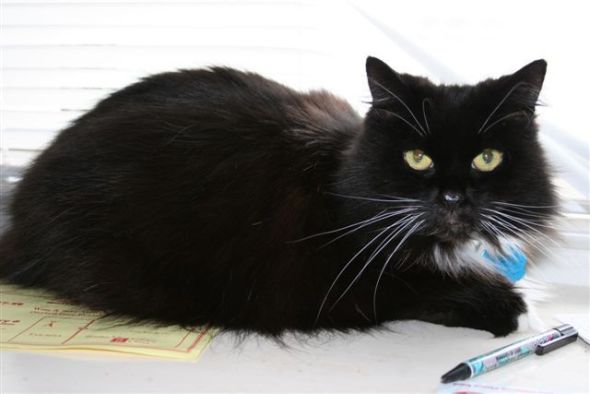
My name is Lili, you can read my adventurous travels, friends and much more within the main book by clicking on me. Hope you enjoy as there are going to be many more stories coming. Available on Kindle at Amazon too.
We interviewed the Author Carl Delvic, regarding his recent children’s publication of which his pet cat Lili is the main inspirational witty feline character that’s intelligent and adventurous. Please take a moment to click on the link above to view Travels with Lili available only at Amazon at a special low price and well worth the read.
Below is an extract from the interview from which we asked Mr Carl Delvic a native from Central Florida, and a graduate of Central Florida Metropolitan University what inspired him to write Travels with Lili and what he aims to gain from his publication. We also asked an of topic question that bugs many children that have been abused as children.
Interviewer;
Carl, what inspired you to write the book Travels with Lili ?
Author - Carl Delvic;
What inspired me to write Travels with Lili was first of all I have a cat named Lili who is very intelligent and adventurous. I was explaining to some friends about some of her exploits and one of them suggested that I write a children’s book about her. Which I did and embellished it for literary purposes. I have always been an animal lover and I have a passion for animal rights and protection of animals from abuse and mistreatment.
Interviewer;
Why did you chose to aim your book at the younger generation for?
Author - Carl Delvic;
I am aiming at younger readers because I want to see the next generation grow up with compassion for animals and zero tolerance for abusers.
Interviewer;
What do you want to achieve by writing and selling your book?
Author - Carl Delvic;
I am hoping to eliminate animal abuse and exploitation within a single generation and create a safe environment for animals and also an appreciation of the capabilities that animals possess. I don’t believe in the misconception of “dumb animals”. I believe that animals possess a type of intelligence that may differ from ours but is in no way inferior.
Interviewer;
Why did you choose Lili the cat to be the main leading figure within the publication and can you describe one of Lili’s most positive moment’s and sad moment’s within the book itself?
Author - Carl Delvic;
I chose Lili because she displays the qualities of intelligence, courage and kindness that are portrayed in the book. Within on of the chapters she rescues a small toad from oncoming traffic and treats him with kindness and compassion. There is also a scene where she is very close to death and it seems like there is no hope. Then there is a resolution and lili becomes stronger than ever.
Interviewer;
The chapter from which Lili is close to death yet fight’s on to tell the tale read’s like a perfect thriller, will you be writing any other books in hard back or soft back to narrated DVD’s based on subjects such as animal and environmental abuse?
Author - Carl Delvic;
I am planning to write sequels to this book involving Lili. I am also planning to devote several book’s to other characters who are in this book too.
Interviewer;
In your own word’s Carl, what’s your own thoughts on the modern conception and mislabelling of children that are abused at a young age, that then “may” later turn out to be an abuser of animal’s, to rapists and paedophiles? I wanted to ask you this question like I do many people as some doctors and criminal prosecutors to just members of the public automatically believe that if a child has been sexually or physically abused they then later abuse an animal which is not fundamentally factual. Proven by many Doctors and adolescent therapists. Kind of a taboo area however one we should all clear up within today’s modern world as it outcasts many children and teenagers as not every child that’s abused turns into an abuser which is common fact.
Author - Carl Delvic;
I have heard that rapists and paedophiles were themselves victims of abuse and many of them start out torturing animals. However I do believe that a fundamental concept of enlightened jurisprudence is the principle of
innocent until proven guilty, which is a tenet of any civilized society.
Interviewer;
Can you detail a small area that’s exciting within the book to a humorous part too, to our younger readers?
Author - Carl Delvic;
There is a humorous scene involving a chimpanzee driving a bus and crashing it into a liquor store, a must read.
Interviewer;
Carl, thank you for taking the time to provide to us and our supporters an insight into Travels with Lili, it reads well and is a fantastic book. Again to all of our supporters and viewers you can purchase Carl Delvic’s book (Travels with Lili) at Amazon by clicking this link http://www.amazon.com/Travels-Lili-Mr-Carl-Delvic/dp/1481108409
Interviewer;
Carl, do you have any plans to promote your book at book fairs, asking major public and private book clubs to schools to look into purchasing Travels with Lili and any near future publications that you explained regarding the other character’s in the book?
Author - Carl Delvic;
I haven’t no plan’s for book fairs at the present but I will not rule out any future ones.
Thank you Carl for the insight into Travels with Lili.
Travels with Lili is child friendly and easy to read with pictures and easy print available in English only on lightweight paperback that weighs only 13.9 ounces, Lili’s adventures is easy it fit into any budding young readers school back pack and on bookshelf’s.
Lili’s adventure’s can be purchased on Kindle http://www.videogamebox.co.uk/Kindle_4_Wi_Fi_Book_Reader_p/100011.htm gclid=CPaiwobxo7cCFc3HtAodkwYAYA
Travels with Lili is now available in Kindle format on request at Amazon. We will also be asking Water Stones and Riverside internationally renowned book distributors to push the book further as this is a rather good and informative fun, and adventurous read as well as being a good all round night time bed time story too.
Author Carl Delvic quotes;
“Travels with Lili is an exciting tale of a heroic and compassionate cat who travels across country rescuing her fellow creatures from abusive and distressful situations. This book is both informative and entertaining. It raises awareness of some of the suffering animals endure but it also has a touch of humour here and there in the chapters”
Carl Delvic has given us permission to publish his photographs, context and advertise his written book of which all rights and text to pictures are copyright protected under the Digital Millennium Copy Right Act 2008.
No unauthorised copying and/or distribution of pictures sent to ourselves is authorised without the author Mr Carl Delvic and our permission.
Travels with Lili is priced at $9.00 plus postage and packaging, free shipping on orders over $25.00
Paperback: 128 pages
Product Dimensions: 11 x 8.5 x 0.3 inches
Language: English
Currently in stock
You can view through some of the “brief highlights of the book below.
http://www.amazon.com/Travels-Lili-Mr-Carl-Delvic/dp/1481108409
Please note that videos published below are not part of the book but for our own child awareness education of compassionate animal welfare;

